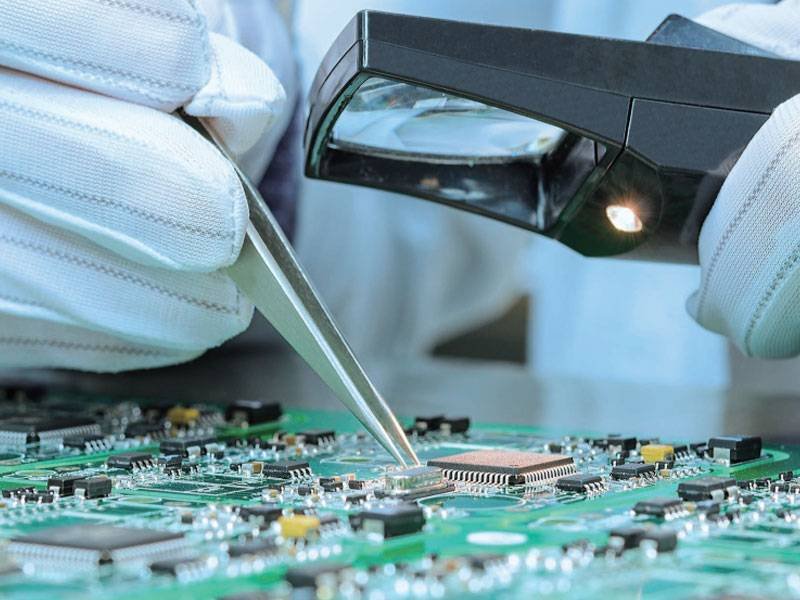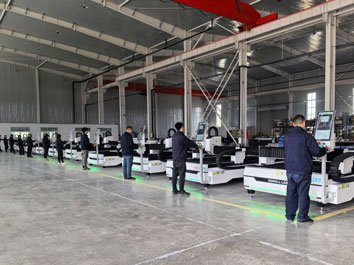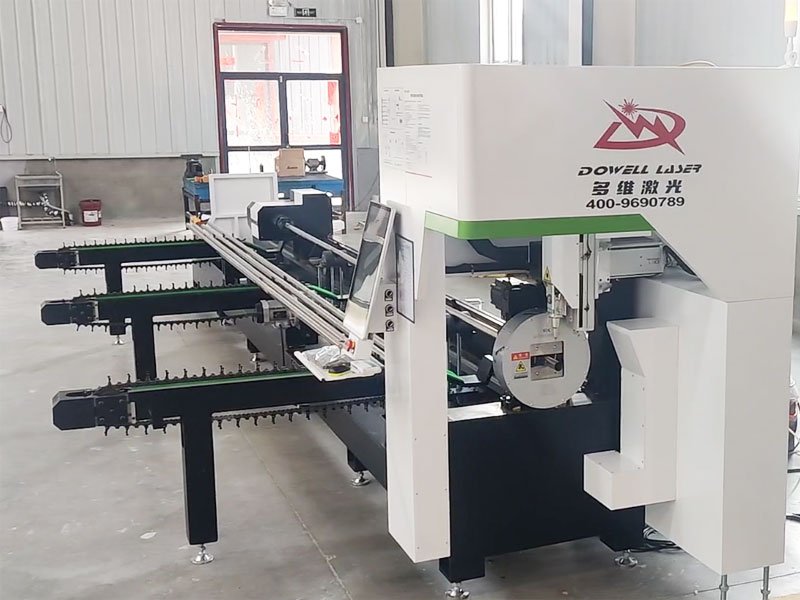With the rapid development of laser technology, water jet guided laser cutting equipment has appeared on the market. This is a major historical breakthrough for the development of the industrial market.
Both processes are widely used in manufacturing companies. Although water jet and laser cutting have many similarities in function, there are still many differences between the two.
This blog will focus on comparing water jet and laser cutting advantages and disadvantages, price, application, speed and other aspects, hoping to help you determine water jet or laser cutting
which equipment is suitable for you.
What is WaterJet Laser Cutting Machine
The laser beam is transmitted to the surface of the object to be processed through a high-pressure water beam to achieve precision processing of the object. This technology combines the high energy density of the laser with the light transmission function of the water beam, the cooling and flushing function of the water, and can provide high-efficiency and high-quality cutting, drilling and other operations during the processing.
This method is particularly valued for its ability to cut without generating heat, which is crucial for materials that are sensitive to thermal stress.
Types of Water Jet Cutting:
- Pure Water Jet Cutting: Utilizes only water, suitable for softer materials like rubber, foam, or textiles.
- Abrasive Water Jet Cutting: Adds an abrasive substance, typically garnet, to the water stream, enabling the cutting of harder materials such as metal, glass, or stone.

What is Laser Cutting Machine
Laser cutting employs a focused beam of light (laser) to melt, burn, or vaporize materials, resulting in precise and clean cuts. This technology is widely used across various industries due to its speed and accuracy.
Types of Laser Cutting:
- CO2 Lasers: Commonly used for non-metal materials like wood, acrylic, and some plastics.
- Fiber Lasers: Known for cutting metals, particularly reflective materials like aluminum and copper.
- NdLasers: Often used in specialized applications, including marking and engraving.
Laser Cutting Vs Water Jet Guided Laser Cutting Cost
Laser Cutting: The initial investment for a standard laser cutting machine varies depending on the type of laser (e.g., CO2, fiber) and the machine’s capabilities. Prices generally range from $50,000 to $300,000. Fiber lasers, which are more efficient and faster, tend to be at the higher end of this range.
Waterjet-guided laser cutting: This technology combines water jet and laser cutting in a single system. Due to the complexity of integrating the two cutting methods, the initial investment for these machines is much higher. Prices start around $200,000 and can go up to $600,000 or more, depending on the system’s capabilities and features.
Maintenance: Water Jet Vs Laser Cutting Cost
| Cost Factors | Laser Cutting | Water Jet Guided Laser Cutting |
|---|---|---|
| Power Consumption |
Laser cutting machines, especially fiber lasers, are relatively energy efficient. However, they still require a significant amount of electricity, particularly when cutting thicker or reflective materials. |
Power consumption is higher since both the laser and water jet systems need to be operated simultaneously. |
| Consumables |
The main consumables include gases such as nitrogen or oxygen used in the cutting process. These costs are generally manageable but can increase depending on production volume. |
In addition to the gases used in laser cutting, this method also requires a constant supply of water, increasing operating costs. If abrasives are used in the water jet process, these costs can increase further. |
| Maintenance | Regular maintenance is necessary to keep a laser cutting system running efficiently, but the cost is generally lower compared to a water jet system, especially with modern fiber lasers. |
Maintenance costs are higher because both the laser and water jet components require care. This includes maintaining the high-pressure water pump and the laser optics system. |
Water Jet Vs Laser Cutting Speed ,Material Waste and Quality
| Factors | Laser Cutting | Water Jet Guided Laser Cutting |
|---|---|---|
| Cutting Speed and Efficiency | Laser cutting is known for its high speed, particularly with thin materials. This efficiency can lead to lower labor costs and faster turnaround times, which is a significant advantage in high-volume production. | While this method offers precision cutting with minimal thermal impact, it is generally slower than standard laser cutting. The added complexity of combining water jet and laser technologies can reduce overall cutting speed, leading to higher labor costs and longer production times. |
| Material Waste and Quality | Laser cutting produces minimal waste, but there is a small heat-affected zone (HAZ) that can cause slight material loss, especially with thin or sensitive materials. | This method excels in minimizing material waste and eliminating thermal distortion. The water jet cools the cutting area, preventing any heat-affected zone, which preserves material quality and reduces waste. |
| Cost Per Unit | Due to its speed and efficiency, the cost per unit is generally lower, making it cost-effective for large-scale production, especially when cutting metals and thin materials. | The cost per unit is typically higher due to slower cutting speeds and higher operational costs. However, the superior edge quality and lack of thermal distortion may justify the cost in applications requiring the highest precision and material integrity. |
| Suitability for Projects | Ideal for projects requiring fast production, high precision, and lower costs. It’s especially suitable for metals, plastics, and other thin materials. | Best for projects that demand superior edge quality, no thermal distortion, and cutting of complex materials that might otherwise be challenging for standard laser cutting. The higher cost may be justified in industries where material integrity and precision are critical, such as aerospace or medical device manufacturing. |

The Pros and Cons of Laser Vs Water Jet Guided Cutting
| Factors | Laser Cutting | Laser Microjet Machine/Water Jet Guided Cutting |
|---|---|---|
| Pros | High Speed and Efficiency: Ideal for high-volume projects due to fast cutting speeds. Precision and Accuracy: Extremely precise cuts with tight tolerances. Versatility: Effective on a wide range of materials, especially thin ones. Lower Cost Per Unit: Generally more cost-effective for large-scale production. | No Heat-Affected Zone: Eliminates thermal distortion, preserving material integrity. Material Versatility: Can cut virtually any material, including thick and heat-sensitive ones. Superior Edge Quality: Produces smooth, burr-free edges. Environmental Benefits: Uses water and abrasives, which are more eco-friendly. |
| Cons | Heat-Affected Zone (HAZ): Can cause slight distortion or material loss. Material Limitations: Less effective on very thick or reflective materials. Initial Investment: Requires significant upfront cost. | Slower Cutting Speed: Generally slower, leading to higher labor costs. Higher Operating Costs: Requires continuous water, abrasives, and high maintenance. Complex Setup and Maintenance: More complex maintenance routines increase long-term costs. Higher Cost Per Unit: More expensive, particularly for small-scale or intricate projects. |
Applications of Water Jet Guided Cutting vs. Laser Cutting
Water Guided Laser Cutting Applications
Water jet guided cutting is highly versatile and is used in industries where precision and material integrity are crucial.
Aerospace Industry: Used for cutting complex shapes in metals, composites, and other materials without altering their structural properties. Ideal for cutting titanium, aluminum, and high-strength alloys.
Medical Device Manufacturing: Used for precise cutting of materials like stainless steel, titanium, and ceramics, where maintaining material integrity is essential.
Automotive Industry: Employed in cutting intricate parts from metals, composites, and rubber without causing heat damage.
Glass and Stone Cutting: Preferred for cutting delicate materials like glass, granite, and marble due to its ability to make clean cuts without cracking or chipping.
Food Industry: Used to cut food products without contamination, as the process doesn’t generate heat or use chemicals.

Laser Cutting Applications
Laser cutting is known for its speed and precision, making it ideal for a variety of applications, including:
Metal Fabrication: Widely used for cutting steel, aluminum, and other metals, especially in sheet metal fabrication for automotive, aerospace, and construction industries.
Electronics and Electrical Industries: Used to cut intricate parts for circuit boards, connectors, and enclosures with high precision.
Signage and Advertising: Ideal for creating detailed designs and letters from materials like acrylic, wood, and metal.
Textile Industry: Used for cutting patterns in fabrics, leather, and other materials, offering clean edges and reducing material waste.
Jewelry Making: Enables precise cutting of metals and other materials for intricate jewelry designs.
How to Choose Between Water Guided Cutting and Laser Cutting
Material Type and Thickness
Waterjet-Guided Cutting: Best suited for thicker materials, reflective metals, composites, and heat-sensitive materials. It is also ideal for cutting non-metallic materials such as glass, stone, and ceramics.
Laser Cutting: Better suited for metals, plastics, and thin materials. It is particularly effective when working with materials less than 25 mm thick.
Precision and Edge Quality
Waterjet-Guided Cutting: Provides superior edge quality without thermal distortion, making it a better choice for applications that require the highest precision and material integrity.
Laser Cutting: Provides excellent precision with minimal material loss, but may introduce a small heat-affected zone (HAZ) on sensitive materials.
Speed and Efficiency
Laser Cutting: Cuts faster, especially with thin materials, making it better suited for high-volume production.
Waterjet-Guided Cutting: Typically slower due to the complexity of combining water and laser cutting technology, making it less efficient for large-scale production.
Cost Considerations
Waterjet-Guided Cutting: Typically involves higher operating costs due to the need for water, abrasives, and maintenance of both the laser and waterjet systems.
Laser Cutting: While the initial investment can be high, operating costs are generally low, especially when cutting metals and thin materials at high speeds.
Environmental Impact
Waterjet Guided Cutting: Uses water and natural abrasives, making it a more environmentally friendly option.
Laser Cutting: Requires the use of gas, which can have an impact on the environment, depending on the type and volume used.
Conclusion
High-pressure water jet laser microjet machine and laser cutting each have advantages and are suitable for different applications. When choosing between the two, consider the material, required accuracy, thickness, and budget. For customized advice on choosing the best cutting method for your project, it is always a good idea to consult a professional.



